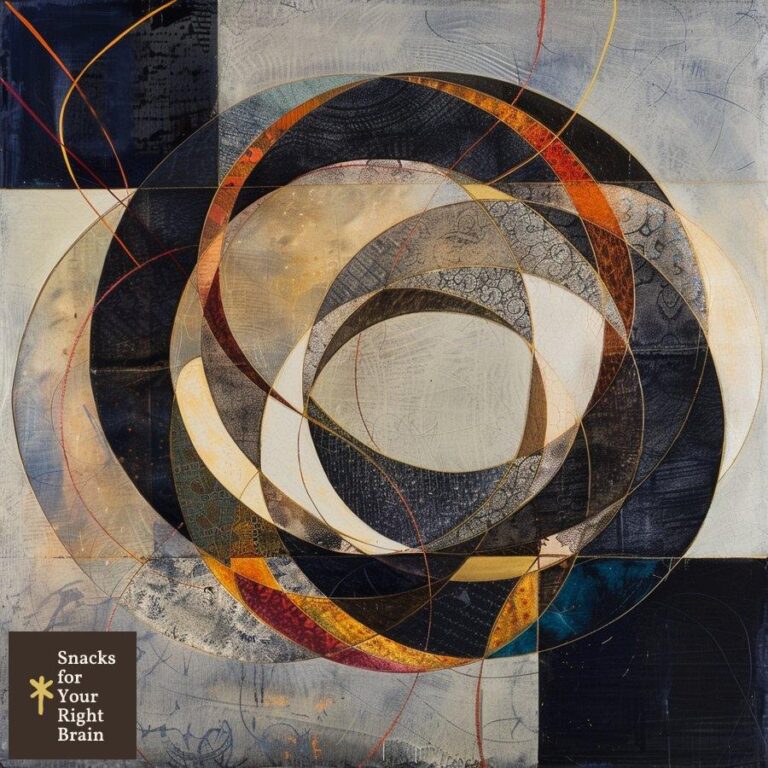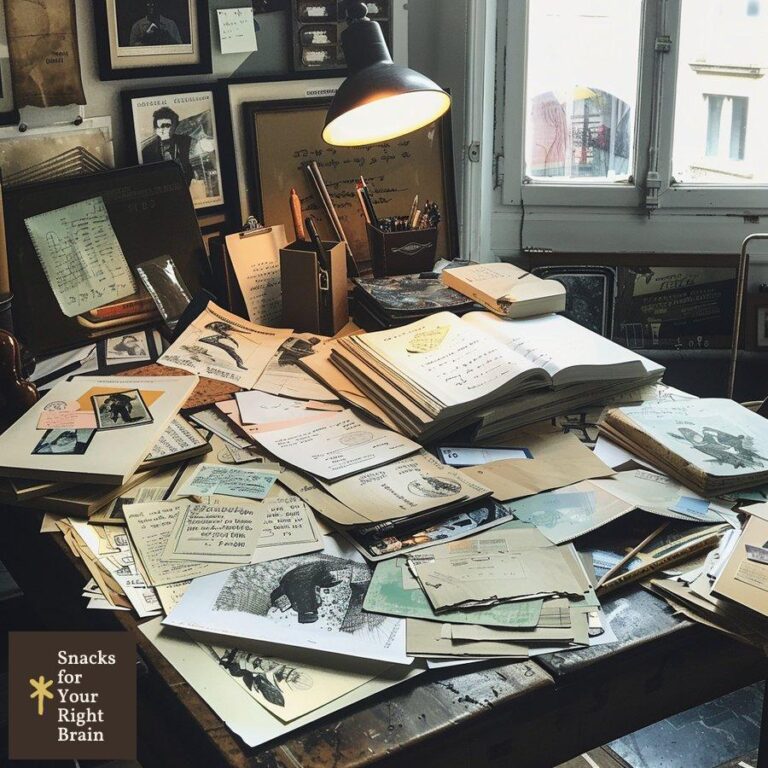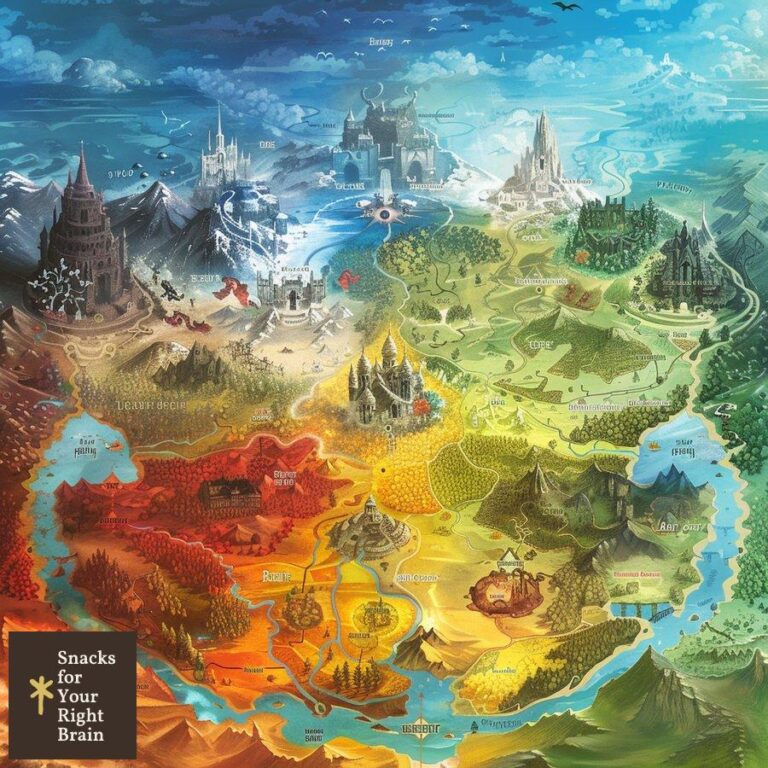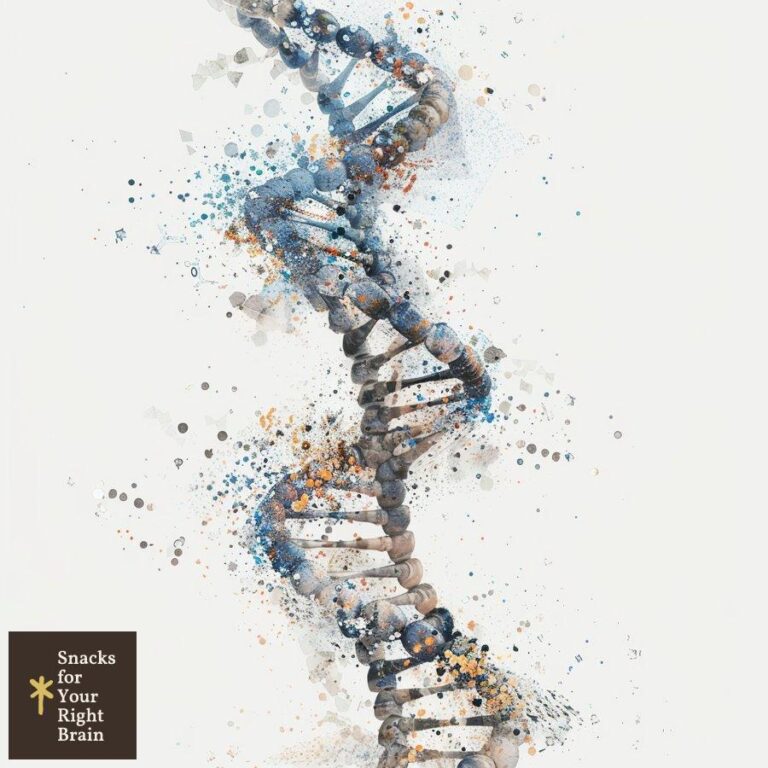What Are the 12 Most Common Archetypes
What are character archetypes?
Character archetypes are universal symbols or patterns that represent typical characters in storytelling. They embody specific traits, motivations, and roles that resonate with audiences across cultures and time periods. These archetypes serve as templates for character development, helping writers create relatable and engaging figures that drive narratives forward.
Character archetypes can be categorized into various types, including heroes, mentors, and villains. Each archetype has distinct characteristics that influence the story’s progression and the dynamics between characters. Recognizing these archetypes allows readers and writers to understand the underlying themes and emotional resonance within a narrative.
Why are character archetypes important in storytelling?
Character archetypes play a significant role in storytelling for several reasons:
-
Relatability: Archetypes help audiences connect with characters on an emotional level. When readers recognize familiar traits, they can empathize with the character’s journey.
-
Structure: Archetypes provide a framework for storytelling. They guide writers in developing plots and character arcs, ensuring that narratives are cohesive and engaging.
-
Thematic Depth: Archetypes often embody broader themes, such as love, sacrifice, or the struggle for identity. By utilizing archetypes, writers can explore complex ideas in a way that resonates with readers.
-
Cultural Significance: Archetypes transcend cultural boundaries, allowing stories to be understood and appreciated by diverse audiences. This universality enhances the impact of a narrative.
Understanding the importance of character archetypes enables writers to craft compelling stories that resonate deeply with their audience, making the characters memorable and the narratives impactful.
How do archetypes differ from stereotypes and clichés?
Archetypes, stereotypes, and clichés are often confused, but they serve different purposes in storytelling.
-
Archetypes are foundational character types that represent universal patterns of human behavior. They are flexible and can be developed in nuanced ways, allowing for depth and complexity.
-
Stereotypes are oversimplified and generalized beliefs about a group of people. They often lack depth and can perpetuate harmful biases. Stereotypes reduce characters to one-dimensional traits, limiting their potential for growth and development.
-
Clichés are overused expressions or ideas that have lost their originality. In character development, clichés refer to predictable character traits or story arcs that fail to surprise or engage the audience.
The primary distinction lies in the depth and flexibility of archetypes compared to the rigidity of stereotypes and clichés. Writers should strive to create well-rounded characters that go beyond stereotypes while utilizing archetypes to enhance their narratives.
What is the origin of the 12 common archetypes?
The concept of archetypes can be traced back to ancient mythology and literature, but it gained significant attention in the 20th century through the work of psychologist Carl Jung. Jung proposed that archetypes are part of the collective unconscious, a shared reservoir of experiences and symbols inherent in all humans.
The 12 common archetypes were popularized by various theorists and writers, including Joseph Campbell and Christopher Vogler, who explored their application in storytelling. These archetypes include:
- The Hero
- The Innocent
- The Caregiver
- The Explorer
- The Rebel
- The Lover
- The Creator
- The Jester
- The Sage
- The Magician
- The Ruler
- The Outlaw
Each archetype reflects fundamental human motivations and experiences, making them relevant across different cultures and narratives. Their origins lie in the shared human experience, allowing writers to tap into these archetypes to create compelling stories.
Who is Carl Jung and how did he influence archetype theory?

Carl Jung was a Swiss psychiatrist and psychoanalyst who founded analytical psychology. His work significantly influenced the understanding of archetypes in psychology and literature. Jung proposed that archetypes are innate, universal symbols that reside in the collective unconscious, shaping human behavior and experiences.
Jung’s exploration of archetypes included various categories, such as the Hero, the Mother, and the Wise Old Man. He believed that these archetypes manifest in dreams, myths, and stories, reflecting fundamental human experiences and emotions. Jung’s theories provided a framework for understanding character development in literature, emphasizing the psychological dimensions of archetypes.
His influence extended to writers and filmmakers, inspiring them to incorporate archetypal characters into their narratives. By recognizing the psychological underpinnings of archetypes, creators can craft characters that resonate with audiences on a deeper level.
What are the 3 categories of archetypes?
Archetypes can be broadly categorized into three main groups:
-
Motif Archetypes: These archetypes focus on recurring themes or symbols within a narrative. They include elements such as the journey, the quest, or the battle between good and evil.
-
Character Archetypes: These are the specific types of characters that fulfill particular roles within a story. Examples include the Hero, the Mentor, and the Villain.
-
Situational Archetypes: These archetypes relate to common situations or events that occur in narratives, such as the initiation, the fall, or the sacrifice.
Understanding these categories helps writers identify the roles that characters and situations play in their stories, allowing for more intentional and impactful storytelling.
What is the Hero archetype?
The Hero archetype represents the quintessential protagonist who embarks on a journey, faces challenges, and ultimately achieves growth or transformation. This archetype embodies qualities such as courage, determination, and resilience. Heroes often confront obstacles that test their character and resolve, leading to personal development and self-discovery.
Key traits of the Hero archetype include:
-
Courage: Heroes confront fears and dangers head-on, often putting themselves at risk for the greater good.
-
Determination: Heroes show persistence in the face of adversity, refusing to give up despite the challenges they encounter.
-
Transformation: The Hero undergoes significant personal growth throughout the story, often emerging wiser and more self-aware.
Examples of the Hero archetype can be found in characters like Harry Potter, Frodo Baggins, and Katniss Everdeen, who all embark on journeys that challenge their beliefs and ultimately lead to their transformation.
How does the Innocent archetype function in narratives?
The Innocent archetype embodies purity, optimism, and a desire for safety. Characters representing this archetype often approach the world with naivety and hope, seeking happiness and harmony. The Innocent’s journey typically involves facing harsh realities that challenge their worldview, leading to growth and understanding.
Key functions of the Innocent archetype in narratives include:
-
Symbol of Hope: The Innocent often represents the possibility of a better world, inspiring other characters and the audience to believe in goodness.
-
Catalyst for Change: The Innocent’s experiences can prompt other characters to confront their own flaws and motivations, leading to significant shifts in the narrative.
-
Contrast to Darkness: The presence of the Innocent highlights the darker aspects of the story, emphasizing the struggle between good and evil.
Examples of the Innocent archetype include characters like Dorothy from The Wizard of Oz and Forrest Gump, who navigate complex worlds while maintaining their inherent goodness and optimism.
What role does the Caregiver archetype play?
The Caregiver archetype embodies compassion, nurturing, and selflessness. Characters representing this archetype often prioritize the well-being of others, seeking to provide support and comfort. The Caregiver’s role in narratives typically involves acts of sacrifice and devotion, highlighting the importance of love and empathy.
Key roles of the Caregiver archetype include:
-
Moral Compass: The Caregiver often serves as a guiding force for other characters, helping them navigate moral dilemmas and encouraging them to act with kindness.
-
Source of Strength: The Caregiver’s unwavering support can empower other characters to confront challenges and pursue their goals.
-
Emotional Anchor: The Caregiver provides emotional stability within the narrative, offering comfort and reassurance during difficult times.
Examples of the Caregiver archetype can be seen in characters like Marmee from Little Women and Samwise Gamgee from The Lord of the Rings, who exemplify selflessness and dedication to those they love.
How can writers utilize the Explorer archetype?
The Explorer archetype embodies the spirit of adventure, curiosity, and the quest for discovery. Characters representing this archetype seek new experiences and knowledge, often challenging the status quo. The Explorer’s journey typically involves physical and metaphorical exploration, leading to personal growth and enlightenment.

Writers can utilize the Explorer archetype in several ways:
-
Driving the Plot: The Explorer’s quest for discovery can serve as the central plotline, propelling the narrative forward and introducing new settings and challenges.
-
Encouraging Growth: The Explorer’s journey often leads to self-discovery and transformation, allowing for character development and deeper themes.
-
Highlighting Themes of Freedom: The Explorer embodies the desire for autonomy and freedom, prompting reflections on the nature of adventure and the human experience.
Examples of the Explorer archetype include characters like Indiana Jones and Elizabeth Bennet from Pride and Prejudice, who embody the quest for knowledge and understanding in their respective narratives.
What defines the Rebel archetype?
The Rebel archetype represents defiance, nonconformity, and a desire for change. Characters embodying this archetype challenge authority and societal norms, often fighting against injustice and oppression. The Rebel’s journey typically involves a struggle against established systems, leading to personal empowerment and societal transformation.
Key traits of the Rebel archetype include:

-
Defiance: Rebels resist authority and challenge the status quo, often motivated by a strong sense of justice.
-
Passion for Change: The Rebel is driven by a desire to create a better world, often inspiring others to join their cause.
-
Personal Sacrifice: The journey of the Rebel often involves significant personal risks, as they confront powerful forces in pursuit of their ideals.
Examples of the Rebel archetype can be found in characters like Katniss Everdeen from The Hunger Games and V from V for Vendetta, who embody the spirit of resistance and the fight for freedom.
How does the Lover archetype impact character relationships?
The Lover archetype embodies passion, intimacy, and connection. Characters representing this archetype prioritize relationships and emotional bonds, often seeking love and fulfillment. The Lover’s journey typically involves navigating the complexities of desire, commitment, and sacrifice.
Key impacts of the Lover archetype on character relationships include:
-
Emotional Depth: The Lover’s pursuit of connection adds emotional richness to the narrative, allowing for exploration of themes such as love, longing, and vulnerability.
-
Conflict and Resolution: The Lover’s relationships often involve conflicts that challenge their desires, leading to growth and resolution as characters navigate their feelings.
-
Catalyst for Change: The Lover’s relationships can prompt other characters to confront their own emotions and motivations, leading to transformative experiences.
Examples of the Lover archetype include characters like Romeo and Juliet and Elizabeth Bennet, whose romantic journeys highlight the complexities of love and relationships.
What are the key traits of the Creator archetype?
The Creator archetype embodies imagination, innovation, and the desire to bring new ideas to life. Characters representing this archetype are often visionaries who seek to express themselves through art, invention, or storytelling. The Creator’s journey typically involves overcoming obstacles to manifest their creative vision.
Key traits of the Creator archetype include:
-
Imagination: Creators possess a vivid imagination, allowing them to envision possibilities beyond the ordinary.
-
Passion for Creation: The Creator is driven by a desire to produce something meaningful, often pouring their heart and soul into their work.
-
Resilience: The Creator faces challenges and setbacks in their pursuit of creativity, demonstrating persistence and determination.
Examples of the Creator archetype can be seen in characters like Leonardo da Vinci and Jay Gatsby, who embody the spirit of innovation and artistic expression.
How does the Jester archetype add depth to stories?
The Jester archetype embodies humor, playfulness, and the ability to see the world from a different perspective. Characters representing this archetype often use wit and satire to challenge norms and provoke thought. The Jester’s role in narratives typically involves providing comic relief while also highlighting deeper truths.
Key contributions of the Jester archetype to storytelling include:
-
Humor as a Tool: The Jester uses humor to address serious themes, making complex ideas more accessible and engaging for the audience.
-
Challenging Authority: The Jester often critiques societal norms and authority figures, prompting characters and audiences to reflect on their beliefs.
-
Providing Perspective: The Jester’s unique viewpoint can reveal hidden truths, encouraging characters and readers to reconsider their assumptions.
Examples of the Jester archetype include characters like the Fool in King Lear and Deadpool, who use humor to navigate complex situations and challenge the status quo.
What wisdom does the Sage archetype bring?
The Sage archetype embodies wisdom, knowledge, and insight. Characters representing this archetype often serve as mentors or guides, sharing their understanding and experience with others. The Sage’s role in narratives typically involves imparting valuable lessons and helping characters navigate challenges.
Key contributions of the Sage archetype to storytelling include:

-
Guidance and Mentorship: The Sage provides support and wisdom to other characters, helping them make informed decisions and grow.
-
Exploration of Knowledge: The Sage’s pursuit of knowledge often drives the narrative, leading to discoveries that impact the plot and characters.
-
Reflection on Human Experience: The Sage encourages characters and readers to reflect on their experiences, fostering deeper understanding and growth.
Examples of the Sage archetype can be found in characters like Gandalf from The Lord of the Rings and Yoda from Star Wars, who embody the role of wise mentors guiding others on their journeys.
How does the Magician archetype influence plot development?
The Magician archetype embodies transformation, creativity, and the ability to effect change. Characters representing this archetype often possess special knowledge or skills that allow them to manipulate reality and influence events. The Magician’s role in narratives typically involves using their abilities to create significant shifts in the story.
Key influences of the Magician archetype on plot development include:
-
Catalyst for Change: The Magician often initiates key events that propel the narrative forward, introducing new challenges and opportunities for characters.
-
Exploration of Potential: The Magician’s abilities allow for exploration of themes related to transformation, potential, and the consequences of power.
-
Conflict and Resolution: The Magician’s actions can create conflicts that characters must navigate, leading to growth and resolution.
Examples of the Magician archetype include characters like Merlin from Arthurian legends and Doctor Strange from Marvel Comics, who utilize their powers to shape the narrative and influence other characters.
What authority does the Ruler archetype represent?
The Ruler archetype embodies authority, control, and governance. Characters representing this archetype often hold positions of power and responsibility, making decisions that impact others. The Ruler’s role in narratives typically involves navigating the complexities of leadership and the consequences of their choices.
Key aspects of the Ruler archetype include:
-
Leadership and Responsibility: The Ruler is tasked with making decisions that affect their realm or community, often facing moral dilemmas and challenges.
-
Conflict with Authority: The Ruler’s authority can lead to conflicts with other characters, prompting explorations of power dynamics and governance.
-
Legacy and Impact: The Ruler’s actions often have lasting consequences, shaping the narrative and influencing future generations.
Examples of the Ruler archetype can be seen in characters like King Lear and President Snow from The Hunger Games, who embody the complexities of leadership and authority.
How can writers blend multiple archetypes in a single character?
Writers can blend multiple archetypes in a single character to create depth and complexity. This approach allows for richer character development and more engaging narratives. Several strategies can be employed:
-
Dual Motivations: Characters can embody traits from different archetypes, leading to conflicting motivations and internal struggles. For example, a character may exhibit both Rebel and Caregiver traits, creating tension between their desire for change and their commitment to others.
-
Dynamic Relationships: Blending archetypes can enhance character interactions, as different archetypal traits influence how characters relate to one another. A Hero with Sage qualities may seek guidance while also striving to save others.
-
Thematic Exploration: Combining archetypes allows writers to explore complex themes, such as the balance between authority and rebellion or the interplay between love and sacrifice.
Examples of blended archetypes can be found in characters like Hermione Granger from Harry Potter, who embodies both the Sage and the Hero, showcasing intelligence and bravery in her journey.
What are some examples of archetypes in popular literature and film?
Archetypes are prevalent in literature and film, serving as recognizable templates that resonate with audiences. Some notable examples include:
-
The Hero: Harry Potter from Harry Potter series, who embarks on a journey to defeat evil.
-
The Innocent: Dorothy from The Wizard of Oz, who seeks to return home while maintaining her optimism.
-
The Caregiver: Marmee from Little Women, who provides emotional support and guidance to her daughters.
-
The Explorer: Indiana Jones from Indiana Jones series, who seeks adventure and knowledge.
-
The Rebel: Katniss Everdeen from The Hunger Games, who fights against oppressive authority.
-
The Lover: Elizabeth Bennet from Pride and Prejudice, who navigates the complexities of love and relationships.
-
The Creator: Jay Gatsby from The Great Gatsby, who embodies the pursuit of dreams and artistic expression.
-
The Jester: The Fool in King Lear, who uses humor to reveal deeper truths.
-
The Sage: Gandalf from The Lord of the Rings, who provides wisdom and guidance.
-
The Magician: Merlin from Arthurian legends, who uses magic to influence events.
-
The Ruler: King Lear, who grapples with authority and its consequences.
-
The Outlaw: V from V for Vendetta, who challenges the oppressive government.
These archetypes enhance storytelling by providing familiar frameworks that resonate with audiences, allowing for deeper connections and understanding.
How can understanding archetypes improve character development?
Understanding archetypes can significantly enhance character development in several ways:
Guiding Character Arcs
Archetypes serve as foundational templates for character growth. By understanding these patterns, writers can craft compelling character arcs that feel both familiar and fresh to audiences. For example, a Hero archetype’s journey from reluctant participant to willing champion can provide a clear trajectory for character evolution.
Fostering Relatability
Archetypes tap into universal human experiences and emotions. When writers skillfully employ archetypal traits, they create characters that resonate deeply with audiences. This connection allows readers or viewers to see aspects of themselves in the characters, fostering empathy and investment in the story.
Exploring Themes
Each archetype embodies specific themes and conflicts. By leveraging these inherent qualities, writers can explore complex ideas and emotions in a way that feels organic to the story. For instance, the Rebel archetype naturally lends itself to themes of justice, freedom, and societal change.
Encouraging Depth and Complexity
While archetypes provide a starting point, the real magic happens when writers blend and subvert these patterns. By combining traits from different archetypes or challenging archetypal expectations, writers can create multi-dimensional characters that surprise and engage audiences. This approach adds layers of complexity to characters, making them more realistic and intriguing.
Facilitating Character Interactions
Understanding archetypes helps writers create dynamic relationships between characters. The interplay between different archetypal traits can generate natural conflict, alliance, or growth opportunities within the narrative. For example, the tension between a Ruler archetype and a Rebel archetype can drive significant plot developments.
Writers who incorporate archetypes into character development create richer, more nuanced narratives. This approach enhances individual characters and strengthens overall storytelling, resulting in stories that deeply resonate with readers and viewers.





